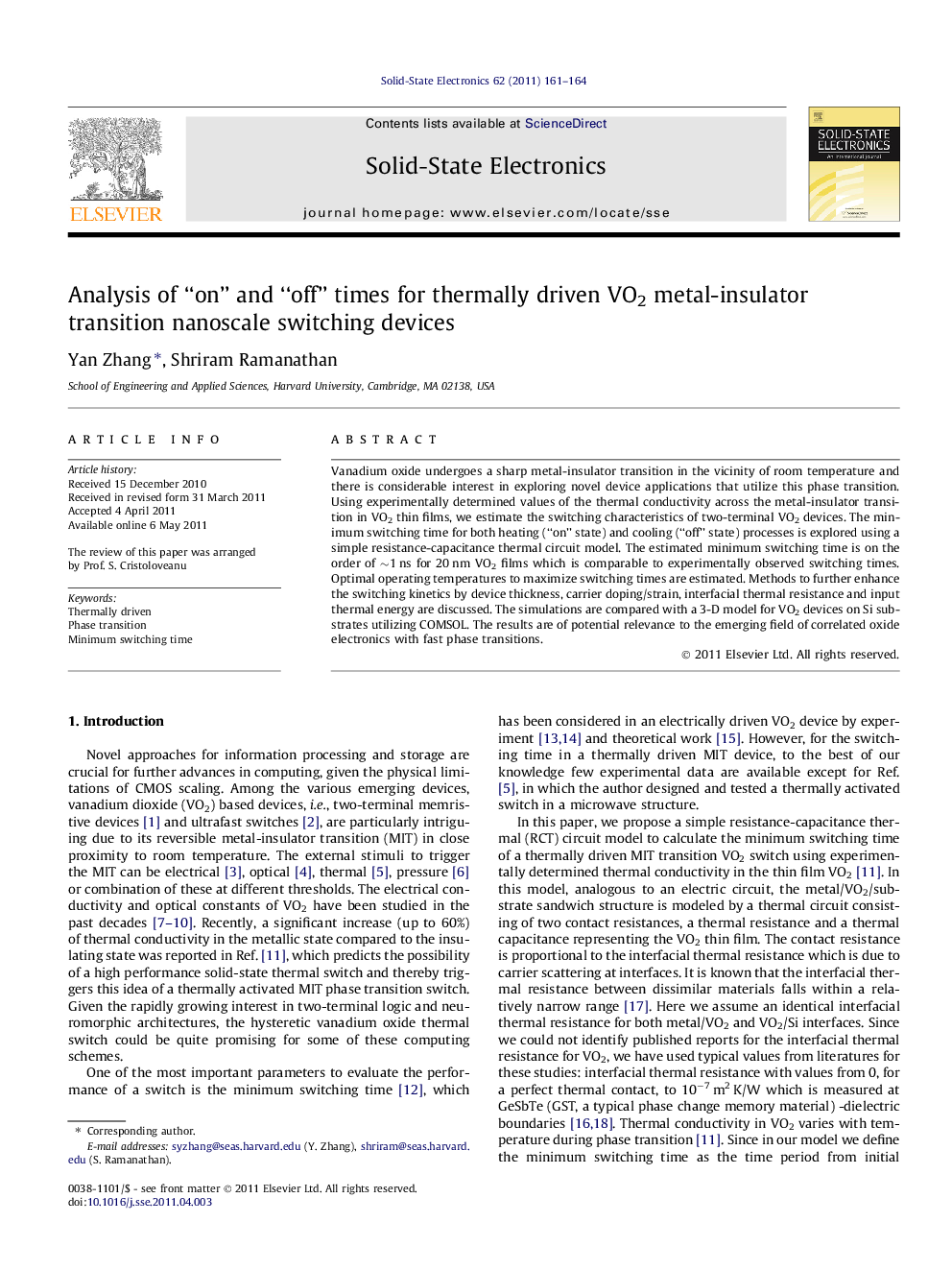| کد مقاله | کد نشریه | سال انتشار | مقاله انگلیسی | نسخه تمام متن |
|---|---|---|---|---|
| 753081 | 895492 | 2011 | 4 صفحه PDF | دانلود رایگان |

Vanadium oxide undergoes a sharp metal-insulator transition in the vicinity of room temperature and there is considerable interest in exploring novel device applications that utilize this phase transition. Using experimentally determined values of the thermal conductivity across the metal-insulator transition in VO2 thin films, we estimate the switching characteristics of two-terminal VO2 devices. The minimum switching time for both heating (“on” state) and cooling (“off” state) processes is explored using a simple resistance-capacitance thermal circuit model. The estimated minimum switching time is on the order of ∼1 ns for 20 nm VO2 films which is comparable to experimentally observed switching times. Optimal operating temperatures to maximize switching times are estimated. Methods to further enhance the switching kinetics by device thickness, carrier doping/strain, interfacial thermal resistance and input thermal energy are discussed. The simulations are compared with a 3-D model for VO2 devices on Si substrates utilizing COMSOL. The results are of potential relevance to the emerging field of correlated oxide electronics with fast phase transitions.
► We estimate the switching characteristics of thermally-driven two-terminal VO2 devices.
► We use a simple resistance-capacitance thermal circuit model to explore the minimum switching time for both heating and cooling processes.
► Our study shows that the estimated switching time is on the order of ∼1ns for 20 nm VO2 films.
Journal: Solid-State Electronics - Volume 62, Issue 1, August 2011, Pages 161–164